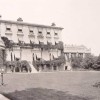
A striking feature of the nineteenth century ‘turn’ towards institutional care for the dying – which led to the first homes and hospices specifically for that purpose – is the central role played by religiously and philanthropically inspired women. These individuals operated across countries and continents, but as far as we can tell, were not linked to or aware of each other’s activities. Their actions are rooted in nineteenth century religious culture, in its emphasis on service and its propensity to organise through religious orders, diaconal structures and charitable groups and associations. The work of these women is a key precursor of hospice developments that took place in the twentieth century and because of that their place in hospice history is assured. Undoubtedly they were a huge inspiration to Cicely Saunders as she developed her ideas in the 1950s and 1960s.
These women are remarkable in founding or inspiring the establishment of specific places to care for the dying. The focus of endeavour in most of these homes was on saving lost souls from sin, on caring for the ‘deserving poor’ and on reaching into deprived communities to offer the glimpse of a better life beyond poverty, drunkenness, gambling and other conditions not consistent with temperate and godly life. These origins of the first hospices and homes for the dying were to be deeply consequential for many decades afterwards, shaping narratives of care at the end of life and pervading the culture and orientation of professional practice in different contexts. Attending physicians offered help and support with the management of distressing symptoms, but the routine and daily care was the preoccupation of nurses, many of whom were in religious orders. Safe passage to eternity was what they sought for their patients, where the ideal of the good death continued to have strong religious components and where medicine was in an ancillary role to spiritual care.
I present here a brief salute to these women and key founders of a movement that gained rapid momentum after their own lives had ended – and in ways they could scarcely have imagined. Remarkably, each of them has an ongoing legacy in modern hospice and palliative care facilities, still operational today, which can trace a direct line back to their individual foundress.
Jeanne Garnier – les Dames du Calvaire
Jeanne Garnier is the earliest founder so far identified of a home for the dying in nineteenth century Europe. A young widow and bereaved mother, she – together with others in similar circumstances – formed L’Association des Dames du Calvaire in Lyon, France, in 1842. The association opened a home for the dying the following year, which it was said, was characterised by ‘a respectful familiarity, an attitude of prayer and calm in the face of death’. Jeanne Garnier died in 1853, but her influence led to the foundation of several other establishments for the care of the dying: in Paris and St Etienne (1874); Marseille 1881 and 1894; Brussels (1886); Rouen (1891); Bordeaux (1909) – La Maison medicale, Notre Dame du Lac; as well as in Rueil Malmaison (1939) and Maison Jeanne XXIII at Freilingen (1966). Reflecting a sense of religious calling to her endeavours, Jeanne Garnier remarked in a memoir towards the end of her own life ‘J’ai fondée mon refuge avec cinquante francs; la providence a faire la reste’.
Mary Aikenhead – the Irish Sisters of Charity
Mary Aikenhead was born in Cork, Ireland, in 1787. At age 25 she became Sister Mary Augustine and was established almost immediately as Superior of a new Order, known as the Irish Sisters of Charity, the first of its kind in Ireland to be uncloistered. The Order made plans to establish a hospital. Three of the sisters went to Paris to learn the work of the Notre Dame de la Pitié Hospital. In Ireland they opened St Vincent’s Hospital, Dublin, in 1834. Following many years of chronic illness, Mary Aikenhead died at nearby Harold’s Cross, in 1858. Fulfilling an ambition which she had long held, the convent where Mary Aikenhead spent her final years became Our Lady’s Hospice for the Dying in 1879. This and other services provided by the order ministered to the needs of a highly impoverished population within Dublin, where mortality was high and access to care and support extremely limited. As TM Healy puts it: ‘the cramped and often squalid conditions where birth, life and death all mingled, were a major reason for starting Our Lady’s Hospice’. It opened its doors with 27 beds under the guidance of Anna Gaynor, known as Mother Mary John, who quickly had to steer the establishment through a vile Winter in which the sewers blocked up and an outbreak of smallpox struck the Hospice itself. Over time the facilities were extended, more beds were added and the Hospice continued to consolidate its activities in the period up to 1914. The Sisters of Charity also developed other facilities to care for the dying as far away as Australia (1890), as well as in England (1905) and Scotland (1948). One of these, St Joseph’s Hospice, Hackney, in the impoverished East End of London, established at the beginning of the 20th century, has had a particularly important place in the narrative of modern palliative care history.
Frances Davidson – the Friedenheim
Frances Davidson founded the first home for the dying in Britain, in 1885. Born in Aberdeenshire, Scotland in 1840, she grew up in a middle class home in a family of faith with an ethic of service. Little is known about her early adult life but at some point after 1870 she was spending time in London and engaged in visiting the sick as part of the work of the Mildmay Mission. The Mildmay Mission Hospital has its origins in the work of The Rev. William Pennefeather and his team of Christian women, later known as Deaconesses, who began their work of visiting the sick of the East End during the Cholera outbreak of 1866. The first Medical Mission Hospital opened in 1877 and moved to Hackney Road in 1892. The Hospital was recognised for the training of nurses in 1883. It appears that Frances Davidson, building on her association with the Mission and inspired by the needs of those dying of tuberculosis in particular, developed an idea de novo to create a ‘home of peace’ for the dying and for reasons which are still not clear adopted the name ‘Friedenheim’ to describe it . She located it in 133 Mildmay Road, Islington, near the Mission headquarters in Mildmay Park, where she devoted all her energies to its cause, right up to her death in 1920, at the age of 80. Preference was given to those for whom mortal illness had reduced their circumstances and to whom the workhouse infirmary was a ‘dreaded last resort’. Initially the Friedenheim had eight beds, but in 1892 a move to new premises in South Hampstead provided accommodation for up to 35 patients. Admission was free, though there were private rooms for those who could afford to pay.
Rose Hawthorne – the Servants of Relief of Incurable Cancer
In the United States, Rose Hawthorne (born in Lenox, Massachsetts, 1851), the daughter of Nathaniel Hawthorne, had experienced the death of a child and watched her friend, the poet Emma Lazarus, dying of cancer. In 1891 both Rose and her husband, George Lathrop converted to Catholicism, five years later they separated and she devoted the rest of her life to the care of poor people with cancer. After taking a three month training course at the New York Cancer Hospital in the summer of 1896, in September of that year she established premises in Scammel Street, on New York’s Lower East Side, where she opened what is said to be the first home in America for the free care of ‘incurable and impoverished victims of cancer’. The work met with ‘countless hardships and almost universal distrust’, but was part of the efforts of an organized group of women known as the Servants of Relief of Incurable Cancer, formed with Alice Huber, the daughter of a Kentucky physician. Rose Hawthorne used her literary connections and abilities to write and publish letters appealing for funds. Support was strong and she was able to move to better premises on Water Street in early 1897. Under the title Mother Alphonsa, she formed an order known as the Dominican Sisters of Hawthorne. Following the establishment of St Rose’s Home for Incurables in Lower Manhattan, another home was founded at Rosary Hill, outside New York, followed by others in Philadelphia, Fall River, Atlanta, St Paul and Cleveland. Like her contemporaries elsewhere, Rose Hawthorne was part of the increasingly common tendency for middle class women to engage with charitable work among the poor, sick and disadvantaged.
Common purpose and shared legacy
Although unknown to each other, Jeanne Garnier, Mary Aikenhead, Frances Davidson and Rose Hawthorne shared a common purpose in their concern for the care of the dying, and in particular the dying poor. Directly and indirectly they founded institutions which, in time, led to the development of other homes and hospices elsewhere, some of which still exist today. They established base-camp for what was to follow, for their achievements created some of the pre-conditions for wider developments in modern hospice and palliative care. The historian Clare Humphreys has shown how these early hospices and homes for the dying reveal three sets of concerns: religious, philanthropic and moral. Such institutions placed a strong emphasis on the cure of the soul, even when the life of the body was diminishing. They drew on charitable endeavours, and were often concerned to give succour to the poor and disadvantaged. Rooted in religious and philanthropic concerns, which would diminish as the twentieth century advanced, the early homes for the dying represent an important prologue to a period of subsequent development, which got underway in the decades after World War Two
Further reading
Bouillat J.M.J. Les Contemporains – an early twentieth century essay on the life and work of Jeanne Garnier. Place and date of publication not known.
Moulin, P (2000) Les soins palliatifs en France: un movement paradoxal de medicalization du mourir contemporain. Cahiers Internationale de Sociologie. 108: 125-59.
Healy, T M (2004) 125 Years of caring in Dublin; Our Lady’s Hospice, Harold’s Cross 1879-2004. Dublin: A and A Farmer.
Broome, H I (2011) Neither Curable Nor Incurable but actually Dying. Unpublished PhD Thesis. University of Southampton.
Humphreys, C (1999) “Undying Spirits”: Religion, medicine and institutional care of the dying 1878-1938. Unpublished PhD thesis, University of Sheffield.
Abel, EK The Inevitable Hour: A history of caring for patients in America. Baltimore: The Johns Hopkins University Press, 2013.


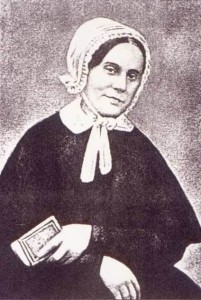
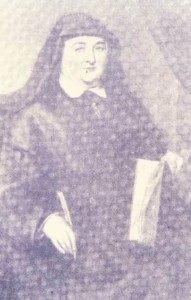
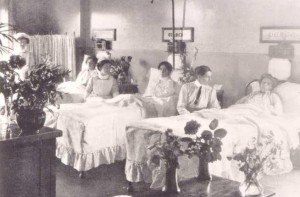
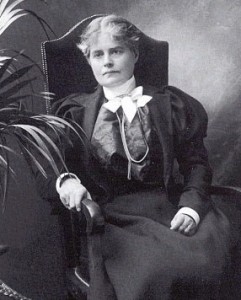
What a fascinating and moving article. Thanks so much for doing this work. Reminds me of an old book by feminist writer Sheila Rowbotham ‘Hidden from History’. So important to know whose shoulders todays torch bearers stand on. I hope you get the wide audience you deserve. I may do a link to it in one of my blogs (I run death awareness workshops) and trust that’s ok with you. warmly, jp
Great piece – thank you for this. So important to take the evolutionary view and realise where practice originates… And continue to hope for further evolution!
Best wishes with your book. Very worthwhile. Glad to learn about it.
So good to see the work of these compassionate and foresighted women acknowledged.
Hurrah! At last I got a website from where I know how to actually obtain useful data regarding my study and knowledge.
I love how Jeanne Garnier was a widow that clearly faced many obstacles on her own yet she chose to help others that were hurting! Truly an encouraging post and I will share it with our hospice Colorado Springs team. Thanks for sharing!
I love how Jeanne Garnier was a widow that clearly faced many obstacles of her own yet she chose to use her live to help others that were facing the hardest obstacle of their lives! Truly an informative post and I appreciate you sharing!